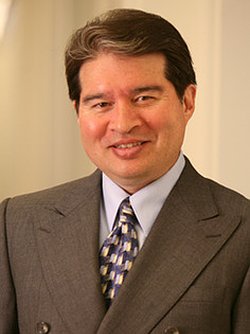01-21-2015 Regimes and Markets: A two-state view of markets and why models work and then fail
Wednesday, January 21st, 2015
Speaker: Edgar E. Peters
First Quadrant LLP
Chairs: David Chrisman, CFA and Christopher Luck, CFA
A Research Foundation Sponsored Event
One of the bedrocks of modern capital market theory is that market risk and related statistics are stable over the long run. Nobel prizes have been won for this insight and it is taught in the best business schools. Regulations have also been written based upon this assumption. Yet, experience does not support this idea. We know that often markets have periods of relative stability, but they can also be followed by years where it seems that all is chaos (and not in the physics sense of the word). In academia there are theories that compete with the Capital Asset Pricing Model (CAPM), the main proponent of stable markets, but these competing theories are generally considered impractical since they don’t lend themselves to easy solutions. The answers we often receive from the usable models, however, go horribly wrong when markets go south.
In this talk we show convincing evidence that there are actually two separate market states, each corresponding to these competing models. In essence, the CAPM and its critics are both right, but only part of the time.
The implications from this for quantitative models and asset allocation are profound. There will be periods where using standard techniques for asset allocation or investment management will work well. When the environment changes, however, those processes may no longer work with reliability. This is particularly true of diversification because assets that diversify one another in one state fail in the other state when they are truly needed. The rules change, and if investors hope to adapt successfully, they will need to know the new rules when the change occurs.
Speaker Bio:

Edgar E. Peters is an asset manager and writer on investment management topics. He is noted for his early contributions to the application of chaos theory and fractals to the financial markets. These works primarily dealt with fat tailed distributions originally discovered by Benoit Mandelbrot and expanded upon in Peters (1991 and 1994). These probability distributions are considered fractal because they are self-similar over different investment horizons once adjusted for scale.
Peters worked as an asset manager for PanAgora Asset Management, Inc., during which time he researched rescaled range analysis, and attempted to estimate the Hurst exponent of various financial markets. He has also taught at Babson College, Boston College and Bentley College, and contributed papers to the Journal of Portfolio Management and the Financial Analysts Journal.] He now works at First Quadrant LLP in California.
His books include Chaos and Order in the Capital Markets (According to WorldCat, the book is held in 659 libraries,) Fractal Market Analysis (held in 485 libraries) and Patterns in the Dark: Understanding Risk and Financial Crisis with Complexity Theory. According to Google Scholar his books and articles have over 3000 references.
His best known contribution is the Fractal Market Hypothesis (FMH) which was outlined in Peters (1994).
Recent research has supported the FMH as well describing the Global Financial Crisis of 2008 as well as Tech Bubble of 2000. The FMH is a model of investor behavior that unlike the Efficient Market Hypothesis assumes investors have multiple time horizons and interpret information based upon their horizon.
 As a participant in the CFA Institute Approved-Provider Program, the
As a participant in the CFA Institute Approved-Provider Program, the
CFA Society of Los Angeles has determined that this program qualifies
for 1 credit hours. If you are a CFA Institute member, CE credit for
your participation in this program will be automatically recorded in your CE Diary.
Registration Links:
CFALA Members: $20.00 (place cursor on amount for link)
Student Discount: $30.00 (Valid Student ID required at the event)
Non-members: $50.00 (place cursor on amount for link)
Date: Wednesday, January 21st, 2015
Time: 12:00pm – 1:30pm, Lunch
Location: Millennium Biltmore Hotel Los Angeles
506 South Grand Avenue
Los Angeles, CA 90071-2607
Parking: Hotel Valet Parking: $20.00
Self-Parking at Pershing Square (located directly across the street on Olive St.): $10.00
Dress Code: Business Casual
Payment Information:
Methods of payment accepted: Visa/Mastercard, American Express and Discover. If you prefer to pay by check please register online and select "purchase order" as your payment option and enter your last name as the purchase order number. Mail check to: CFA Society of Los Angeles, 520 S. Grand Ave, Suite 370, Los Angeles CA 90071.
*Credit card payments will only be accepted through the secure online registration, and not by phone or email.

